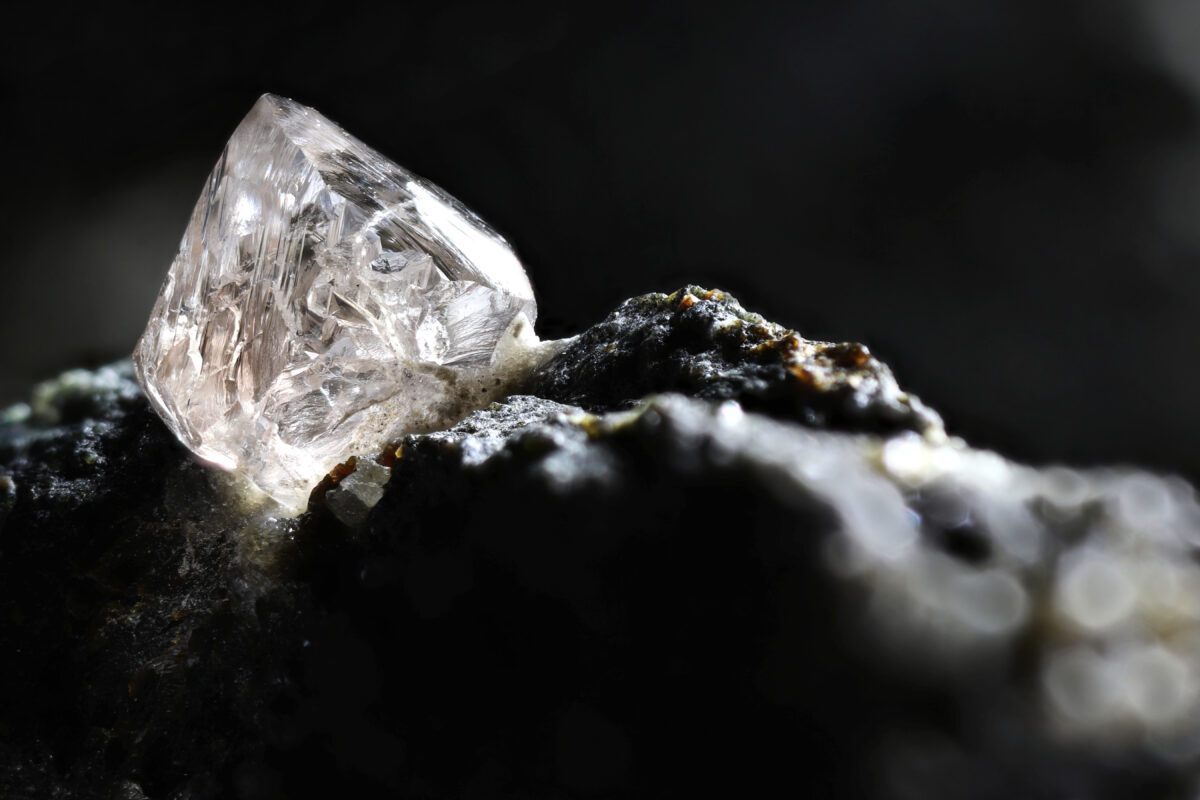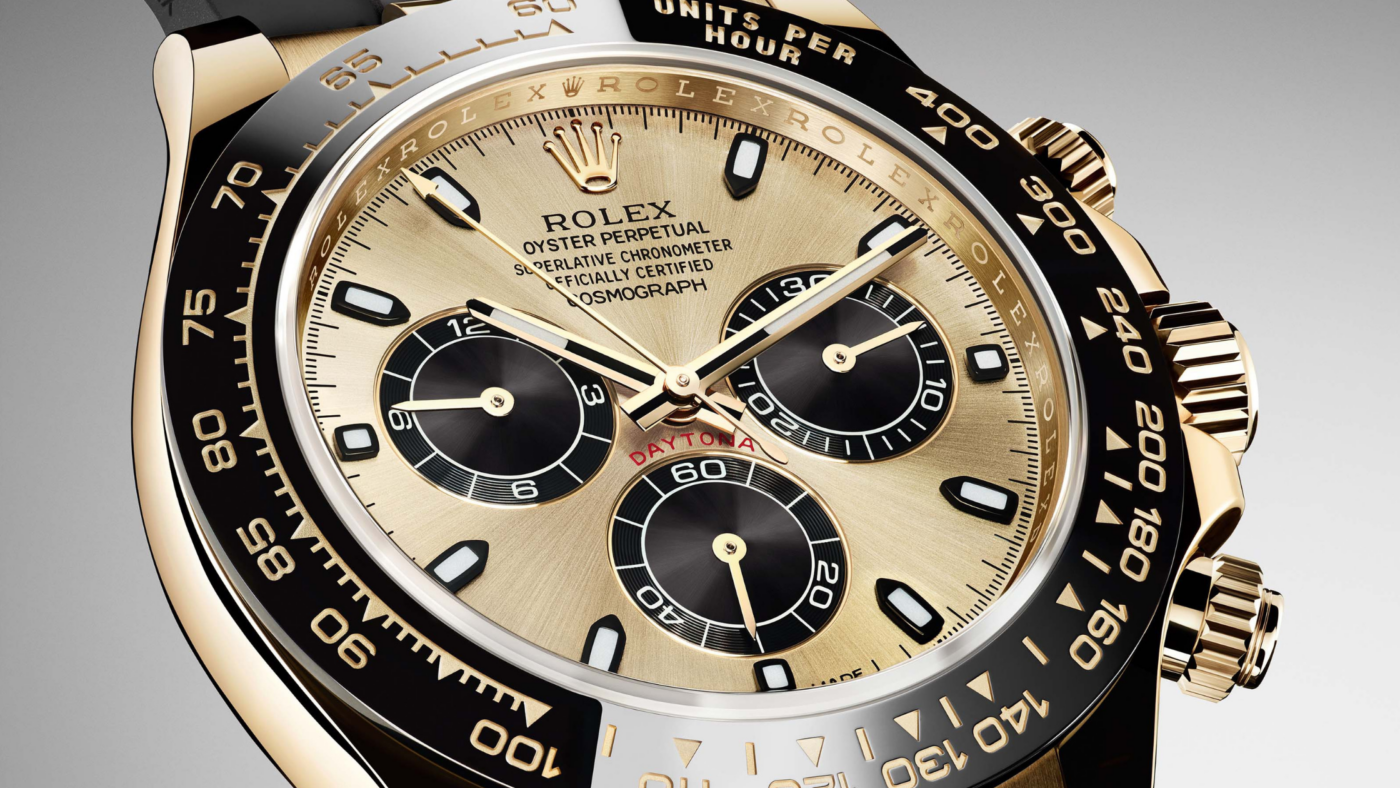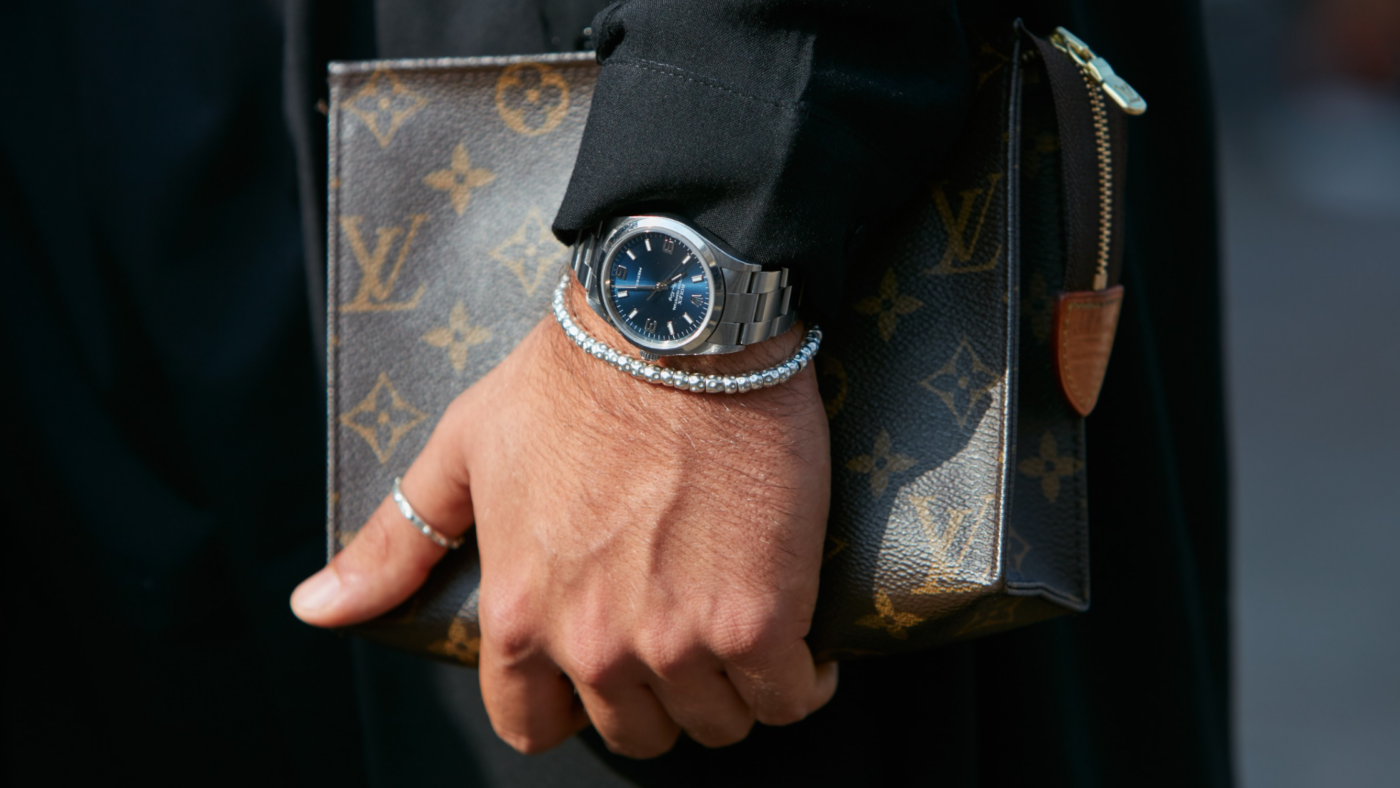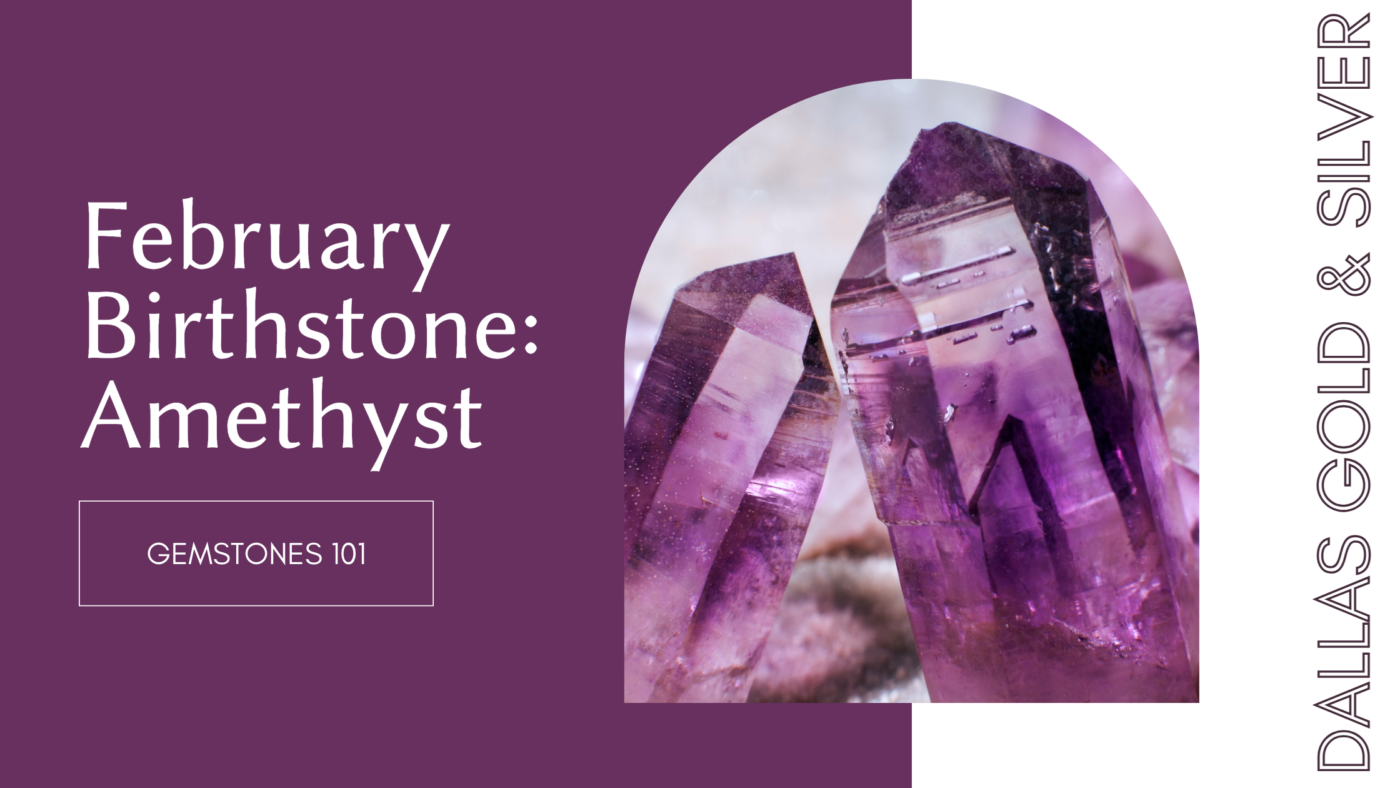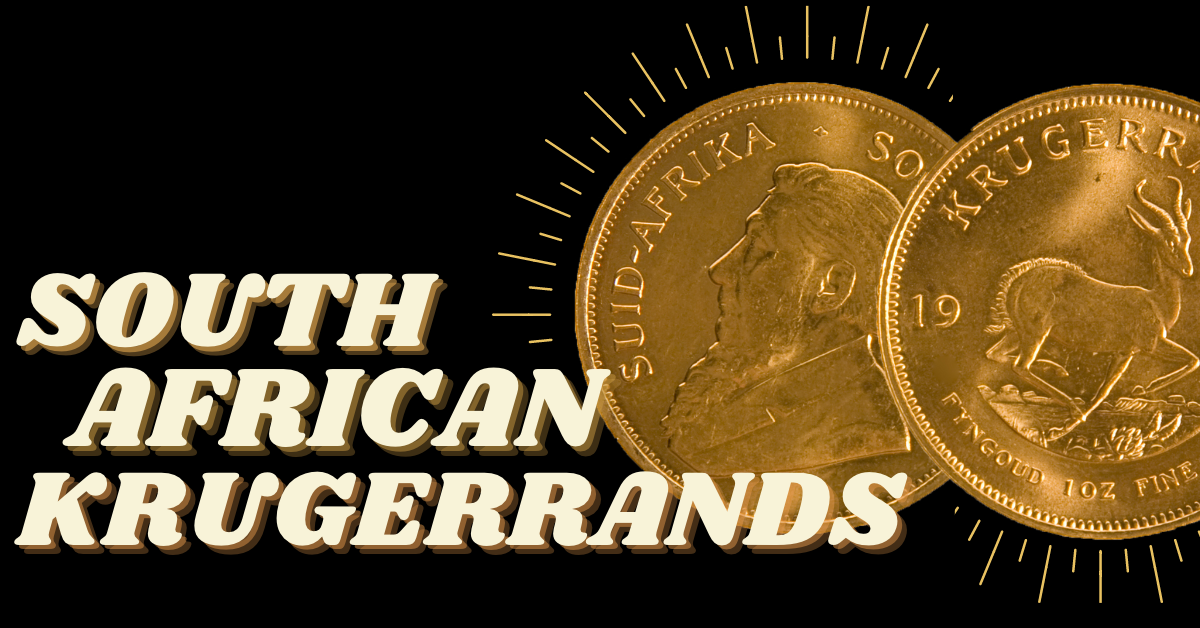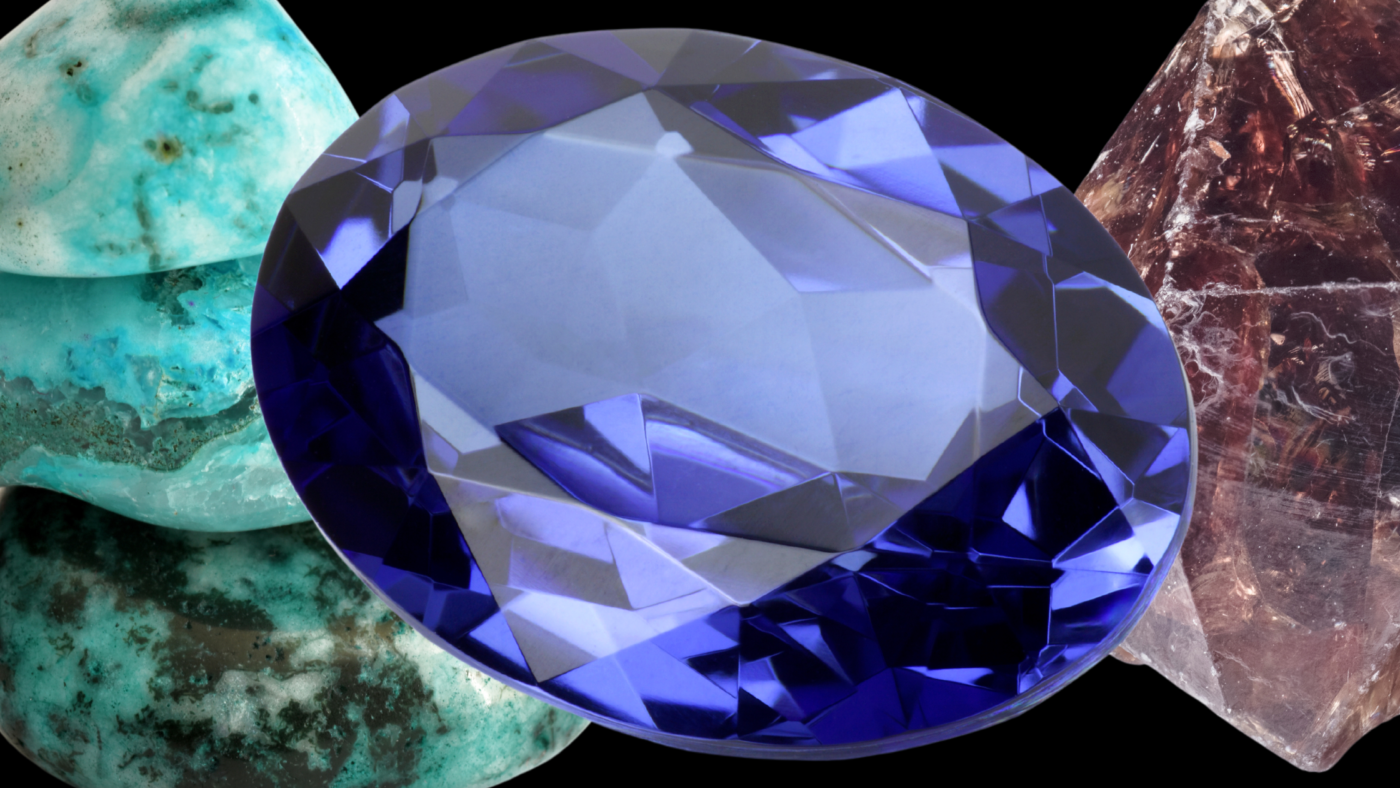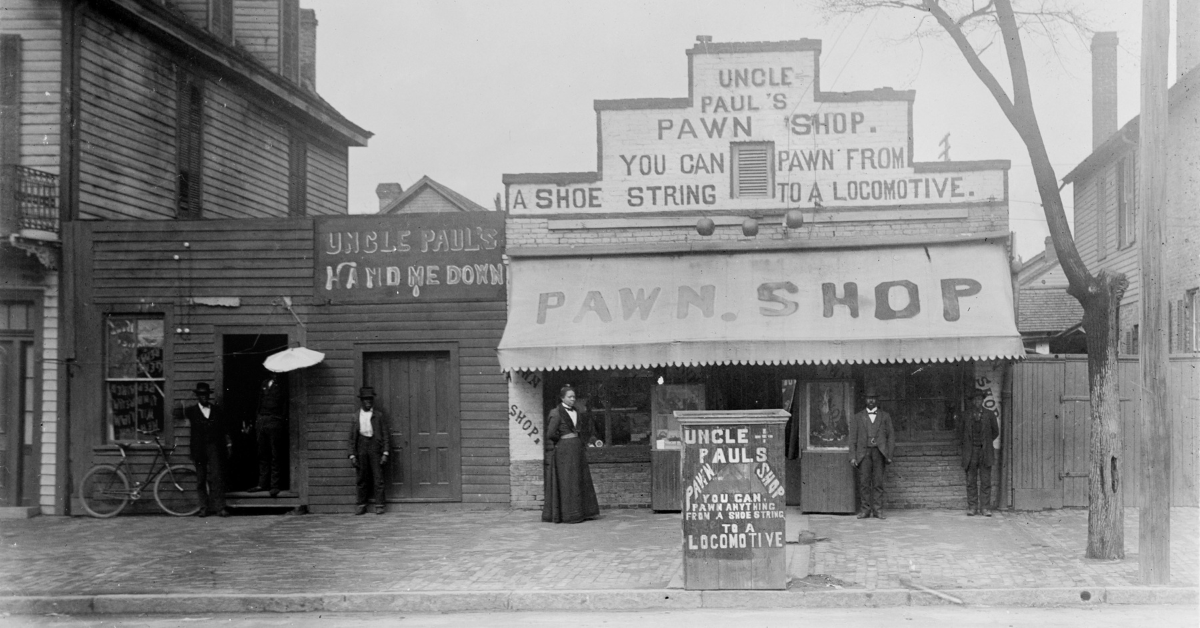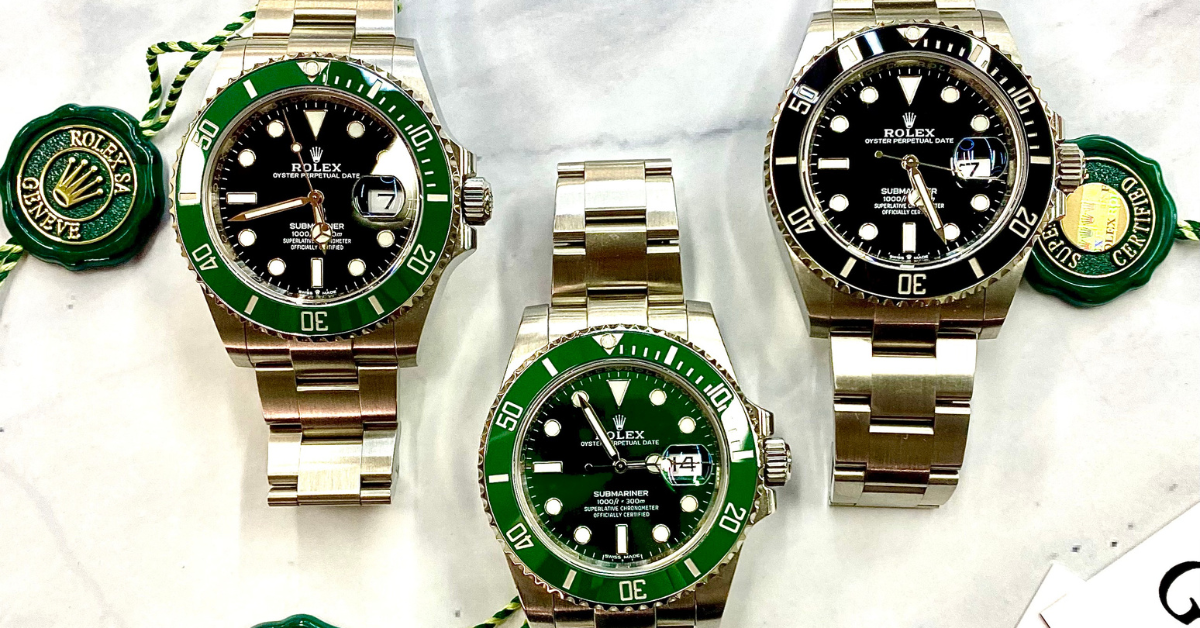Diamonds are one of the world’s most fascinating and valuable gemstones, and their formation process is equally intriguing. They can be formed deep within the Earth’s mantle or inside a lab. What is a Diamond? But first, let’s start with some basic information about diamonds. Diamonds are made of pure carbon, and their crystal structure gives them their characteristic sparkle and brilliance. It takes immense heat and pressure to create, whether they are formed deep within the Earth’s mantle or within a lab. Do you ever wonder what the process is like? Let’s go through how a diamond is formed in each setting: How are Natural Diamonds Formed? So, how are diamonds formed? Several processes can create diamonds, but the “high-pressure, high-temperature” (HPHT) process is the most common method. In this process, carbon is subjected to extreme pressure and heat deep within the Earth’s mantle, which causes it to crystallize into a diamond. According to the Smithsonian, “as far as we know, all diamonds that formed in the Earth formed under those kinds of conditions and, of course, that’s a part of the Earth we can’t directly sample. We don’t have any way of drilling to that depth or any other way of traveling down to the upper mantle of the Earth.” One of the most fascinating aspects of diamond formation is that it can take billions of years to form. Many diamonds are thought to be over 1 billion years old! This means the diamonds we see today are remnants of ancient geological processes long before humans existed. Another interesting fact about diamonds is that they can also be formed by impact events, such as meteorite impacts. When a meteorite strikes the Earth’s surface, it can create immense pressure and heat similar to the conditions found deep within the Earth’s mantle. This can cause carbon to crystallize into diamonds, creating what is known as an “impact diamond.” How are Lab-Grown Diamonds Formed? Similar to natural diamonds, laboratory-made diamonds are created in an artificial setting that mimics how diamonds are naturally formed within the Earth. There are two methods to create lab diamonds: CVD (chemical vapour deposition) and HPHT. During CVD diamond creation, a slice of diamond is placed into a chamber where it is exposed to carbon-rich gas and amped up to extremely high temperatures. In weeks, the original diamond slice eventually crystallises, forming a fully-formed diamond. So, there you have it – a brief overview of how diamonds are formed! Many great resources are available online if you’re interested in learning more about this fascinating topic. Some recommended resources include the Gemological Institute of America (GIA) and the Smithsonian.
Author Archives: Julianne Jacobs
All good things must come to an end! And Rolex is no exception to this rule. Rolex enthusiasts have eagerly awaited to see which models the luxury watch brand would discontinue in 2023. Finally, the wait is over, and we now know which models will no longer be in production. In this blog post, we will discuss which Rolex models will be discontinued in 2023 and what that means for their pricing on the secondary market. Why Will These Models Be Discontinued in 2023? Rolex discontinues certain models to keep inventory fresh, as well as make room for exciting new models. Since Rolex only manufactures a certain amount of watches annually, discontinuing models is a good way to keep things interesting. Rolex Daytona ‘John Mayer’ Ref. 116508 The Rolex Daytona Ref. 116508, known among collectors as the “John Mayer” model, was a limited edition watch released in 2019. The watch features a green dial, a gold ceramic bezel, and 18k yellow gold. Named after the famous musician John Mayer, an avid collector of watches, the watch was limited to 1,000 pieces. Therefore, it sold out within a few hours of its release! Rolex Daytona with a Bright Blue Dial Ref. 116509 The Rolex Daytona with a Bright Blue Dial Ref. 116509 was a popular model among Rolex enthusiasts. The watch features a blue dial and a white gold case. Rolex Milgauss Ref. 116400GV The Rolex Milgauss Ref. 116400GV is a model designed for scientists and engineers. The watch features a green sapphire crystal, as well as the option between a teal and black dial. According to Rolex, the Milgauss is “designed to meet the demands of the scientific community working around electromagnetic fields.” Therefore, it can withstand magnetic fields of up to 1,000 gauss. Rolex Cellini Moonphase Ref. 50535 The Rolex Cellini Ref. Moonphase 50535 was a model that was released in 2017. According to Rolex, the watch “features an exclusive display of the phases of the moon,” as well as a brown leather strap. Rolex Daytona with a Meteorite Dial (116505, 116508, 116509, 116515LN, 116518LN, 116519LN) The Rolex Daytona with a Meteorite Dial was a popular model among Rolex enthusiasts. The watch features a dial made from a meteorite that fell to Earth millions of years ago. Rolex Datejust 41 with a Meteorite Dial (126301, 126331, 126334, 126303, 126333, 126334) The Rolex Datejust 41 with a Meteorite Dial was a model that was released in 2019. The watch features a dial made from a meteorite that fell to Earth millions of years ago. In conclusion, discontinuing these Rolex models will likely mean big things for the secondary market. The value of these watches is expected to increase due to their rarity, making them even more valuable to collectors and enthusiasts alike. So, if you’re lucky enough to own one of these discontinued Rolex models, kudos! You could see the value of your timepiece rise!
Rolex is a luxury watch brand known for its quality, precision, and style. The Rolex Air-King is one of the most iconic watches in their collection, known for its aviation-inspired design and durability. This timepiece has a rich history and is a popular choice among watch collectors and enthusiasts. Learn more about its features, history, cultural significance, and why buying a pre-owned Rolex is a great investment. Features of the Rolex Air-King The Rolex Air-King features a sleek and elegant design, a classic round case, and a clear, easy-to-read dial. The watch is made from high-quality materials, including a stainless steel case and bracelet, scratch-resistant sapphire crystal, and reliable automatic movement. Also, the model is water-resistant to a depth of 100 meters (330 feet), making it suitable for everyday wear and outdoor activities. Coated with luminescent material, the hands and hour markers are visible in low-light conditions. Lastly, the watch also has a distinctive green Rolex logo and the words “Air-King” on the dial. History The Rolex Air-King was first introduced in 1945 as a tribute to the brave pilots of the Royal Air Force who fought in World War II. The watch was designed to be durable and reliable, focusing on accuracy and precision. Over the years, the watch has undergone several design changes and upgrades, but it has always maintained its aviation-inspired roots. Some of the most legendary pilots in history, including the famous British aviator Douglas Bader have sported the Air-King. Several airlines have also used the watch as an official timepiece, including British Airways and Pan Am. Pop Culture The Rolex Air-King has become a symbol of luxury and style in popular culture, with several celebrities and influencers wearing the timepiece. Additionally, American actor and producer Mark Wahlberg often wears his stainless steel Air-King with a black dial. Another celebrity spotted wearing a Rolex Air-King is British musician Ed Sheeran, who owns a vintage model from the 1950s. Buying a pre-owned Rolex can be a great investment, as these watches are highly sought-after. A pre-owned Rolex is not only stylish, but also a piece of history with a rich heritage. Finally, with its durable design, precise movement, and aviation-inspired aesthetics, the Rolex Air-King is a timepiece that will stand the test of time.
February babies: your birthstone is amethyst! This regal stone was practically made to be the February birthstone — the patron of romantic love, St. Valentine, wore an amethyst ring carved with the image of cupid. Every month, we like to dive into each birthstone’s history, symbolism, and lore, so that you can better understand and appreciate the gemstone’s unique beauty and meaning. Amethyst is a stunning and popular gemstone, making for stunning jewelry. Let’s look at its history and the famous amethysts throughout the centuries. What is Amethyst? Amethyst is the purple variety of the quartz mineral species. Its color can range from cool and bluish, to reddish purple. Besides being the birthstone for February, it is also the gem for the 6th and 17th wedding anniversaries. Yes, there’s a gem for every anniversary! Today, amethyst is the most valued of the quartz variety. The History of Amethyst The amethyst has a long history, stretching back to Ancient Greece and Rome, where it was believed to have protective and healing powers. During the Middle Ages, the Catholic Church believed the gemstone’s purple hue was a sign of religious piety. Many bishops and other high-ranking clergy members wore the gemstone in jewelry as a sign of devotion. The ruling classes of Europe and Asia prized it highly and used it to make ornate jewelry and other decorative items. According to Greek mythology, amethyst was created by Bacchus, the Greek god of intoxication, wine, and grapes. He was pursuing a woman, Amethyste, who refused his affections and prayed to the gods to remain chaste. The goddess Diana responded, transforming Amethyste into a white stone. In shame, Bacchus poured a goblet of wine over the stone as an offering, dyeing its crystals purple. Famous Amethysts One of the most famous amethysts is the Heron-Allen amethyst, which has a curious and tragic history. The purple gemstone was discovered in the late 19th century and was believed to be cursed due to its association with a series of mysterious deaths and misfortune. The amethyst was eventually sold to a collector, who hid it to avoid further tragedy. Whether it’s a birthstone or a curiosity, amethyst is a fantastic gemstone that will bring pleasure and delight to anyone wearing it. Dallas Gold & Silver Exchange has a great selection of gemstone jewelry, including amethyst, ready to add to your collection. Visit any of our locations to shop.
What is the Gold Krugerrand? Krugerrands are gold coins minted by the Republic of South Africa to help promote South African gold to international markets. Today, they are bought and sold according to the spot price of gold. They are among the most frequently traded gold coins in the world market. About the Gold Krugerrand The obverse of the Krugerrand coin, designed by Otto Schultz, bears the image of Paul Kruger, president of the South African Republic from 1883 to 1900. The coin’s name is a mashup of Paul Kruger’s surname with the South African currency, “rand.” The coin’s reverse side, designed by Coert Steynburg, features a springbok on its reverse side, the national animal of South Africa. The name “South Africa” is inscribed in both Afrikaans and English. The word “krugerrand” is trademarked by Rand Refinery Limited. History of the Krugerrand When Krugerrands were minted in 1967, the United States did not permit its citizens to own gold bullion. This was before the minting of the American Gold Eagle in 1986. However, the U.S. did permit the ownership of foreign gold coins. Therefore, the Krugerrand could be bought and sold in the U.S. This was a smart move on South Africa’s part; at the peak of the gold market in 1980, Krugerrands accounted for 90% of the world’s gold-coin market! Despite economic sanctions against South Africa for its policy of apartheid in the 1970s and 1980s, over 50 million ounces of gold Krugerrand coins have been sold since production started in 1967. Where Do I Buy Gold Krugerrands? Dallas Gold & Silver Exchange is the premier destination in the DFW metroplex to purchase gold bullion coins, including the South African Gold Krugerrand. Visit any of our locations to shop our wide selection!
December babies, you have the distinct privilege of multiple birthstones to choose from! From the swimmable blues of turquoise to the rich violet-blue tones of tanzanite, your birthstone jewelry can satisfy any style. Read on to learn more about the three beautiful December birthstones: turquoise, tanzanite, and zircon. The OG December Birthstone: Turquoise Turquoise may lack the sparkle of your rubies, diamonds, and sapphires, but it’s a unique stone that draws in admirers with its fascinating history, color, and texture. According to GIA, this December birthstone is only found in a few places: “dry and barren regions where acidic, copper-rich groundwater seeps downward and reacts with minerals that contain phosphorus and aluminum.” “Robin’s egg blue” is the most desirable color among jewelers and consumers alike. It varies in color from sky blue to green, depending on the amount of iron and copper it contains. According to the Smithsonian, “beads made from turquoise dating back to c.5000BCE have been found in Mesopotamia (present-day Iraq), making it one of the first gems to be mined and cut. It is relatively soft and easy to work and can be polished, made into beads, carved, and used for cameos.” Turquoise is porous, which means its color may deteriorate if frequently worn close to the skin. The Newcomer: Tanzanite A relatively new discovery, this December birthstone is a blue-violet variety of zoisite. Masai tribesman Ali Juuyawatu is credited with finding the first tanzanite crystal in 1967. Mistaking it as sapphire, he alerted a local fortune hunter named Manuel d’Souza, who quickly registered four mining claims. As its name hints, Tanzanite is mined commercially exclusively in northern Tanzania. While not quite as well-known as the “big 3” (emeralds, sapphires, and rubies), it has rivaled them in popularity. Therefore, powerhouse Tiffany & Co. recognized its potential and made a deal to become its main distributor in the 1960s. To Tiffany & Co., its rise in popularity was a sure thing. After all, a Tiffany vice president told The New York Times in 1969, “Tanzanite is the first transparent deep blue gemstone to be discovered in more than 2,000 years.” The color of this stone sets it apart. The rich, saturated violet-blue of tanzanite is unparalleled. Its high clarity and potential for large cut stones, along with the help of Tiffany & Co., lead to a boom in popularity during the 1960s and 70s. Although Tanzanites make great choices for everyday jewelry, they don’t rank as high on the Mohs hardness scale as diamonds or rubies. Consequently, this makes them more delicate. Jewelry designers protect the stones using various methods, such as invisible bezel prongs. The Wild Card: Zircon Zircon replaced lapis lazuli as an official December birthstone in 1952. According to GIA, Zircon occurs in an array of colors. The Zircon rainbow includes red, orange, yellow, green, blue, brown, and colorless. Colorless zircon contains brilliance and flashes of multicolored light called “fire.” Zircon is common in the earth’s crust and is fairly hard, with a Mohs hardness of 7.5. Scientists have determined it is the oldest mineral on earth, dating back 4.4 billion years! Blue zircon was popular during the Victorian ages and frequently featured in English estate jewelry during the 1880s. While zircon is a popular gemstone among consumers for its range of colors, blue is still a popular choice today! Looking for the perfect December birthstone piece for the December baby in your life? Shop any of our locations for fabulous gemstone jewelry!
When you first think of pawning jewelry or pawn shops, you may think of the TV show “Pawn Stars,” or maybe even a Quentin Tarantino film. However, pawn shops aren’t just an American practice, although more than 30 million Americans use pawn shops yearly. The practice of pawning has been around for centuries, dating back to ancient China. Today, it’s a $14.5 billion industry with 11,000+ pawnbrokers across the U.S. While pawning jewelry or other valuables might seem like a great way to get quick cash, educating yourself on the industry, the process, and its setbacks is essential. Here are some reasons why avoiding pawn shops might be in your best interest and some alternative options to get cash for your jewelry. What Are Pawn Shops, And How Do They Work? A pawn shop (also called a pawnbroker) is a business that loans money to people who bring in valuable items, which they then leave with the pawn shop. The valuables left behind are known as “collateral,” meaning security for the loan provided by the pawn shop. The person can get their valuable item(s) back from the pawn shop if they pay back the money the pawn shop loaned them with interest. However, suppose the person doesn’t repay the loan and interest within an agreed-upon timeline. In that case, the pawnbroker can sell the valuable item to another customer to get back the money the pawn shop loaned. How Do Pawn Shops Make Money? Pawn shops make money in two ways: (1) making personal loans and (2) selling unclaimed collateral items. Providing Personal Loans Pawn shops give out personal loans to individuals who relinquish custody of an item, such as jewelry or electronics. The amount a pawn shop is willing to lend is based on a few different factors: the value of the item, the pawnshop’s inventory at the time of the loan, and demand for the item. Since individuals seeking a pawn loan typically can’t qualify for a traditional bank loan, the risk of default is higher. That’s why pawn shops make loans with substantially higher interest rates than banks typically charge for personal loans. State law governs the amount of interest a pawn shop is allowed to charge. In Texas, the maximum pawn shop rate is 240% APR! That’s high! Reselling Pawn shops’ second primary income source is retail sales on unclaimed merchandise and items purchased outright from individuals. How Much Will Pawn Shops Give For Your Jewelry? If you are considering pawning jewelry, you might wonder how much pawn shops offer. Unfortunately, selling your jewelry to pawn shops guarantees the lowest amount of money in exchange for your items, thanks to the business model we outlined above. While pawn shops tend to offer more money to purchase items outright than to lend against them, it still will only get you about 50% of the value of your jewelry. Even if you need cash in a pinch, there are more lucrative ways to sell and get more out of the value of your jewelry. Alternatives to Pawning Jewelry If you want more money out of your jewelry, there are better ways! It also makes sense to outright sell jewelry you no longer want or need, rather than taking out a loan with a pawn shop. Those interest rates are no joke, especially in Texas! Here are some other, more lucrative, ways to sell your jewelry: Selling Online While this isn’t a great option if you need cash on the spot, you can sell your jewelry online to get more value out of your jewels. eBay is a great, safe option for everyday sellers. If you end up needing to do an in-person transaction, here are some do’s and don’ts to ensure your safety: DON’T agree to meet strangers alone. DON’T give out your address. DO meet in a safe, public place. DO accept cash only. Dallas Gold & Silver Exchange We’ve been around since the 1960s. We’ve stood the test of time by offering customers the most for their jewelry and being a trustworthy source of information. If you don’t believe us, shop around before you come to see us! We’ll give you the best offer and the best experience with our friendly, knowledgeable associates. You can bring your jewelry to any of our metroplex locations during our business hours at your convenience. No appointment is necessary. Want to learn more about the selling process at Dallas Gold & Silver Exchange? Let Loreina walk you through the easy process by clicking the video below!
The Rolex Submariner is every luxury watch collector’s must-have. From helping divers discover the deep to saving James Bond from precarious perches, its iconic status in the industry is unmatched. Today, the Submariner is the gold standard of dive watches. It reigns as one of the most famous luxury watches created. So, want to learn more about this supremely infamous model? Then read on to learn about its history, features, and why they make an excellent addition to any luxury watch collection. History of the Rolex Submariner Rolex executive and amateur diver Rene-Paul Jeanerret convinced Rolex that investing in a watch specifically made for divers was the way to go. As a result, the Submariner was introduced in 1954 as the first purpose-built commercial diving watch. Additionally, the timing couldn’t have been better — the release coincided with a heightened public interest in the deep sea and a flourishing advent of scuba diving. With a water-resistance rating of 100 meters (330 feet), it was a significant breakthrough in the “technically mastery of waterproofness,” according to Rolex. Today, the Submariner is waterproof to a depth of 300 meters (1,000 feet). Features of the Rolex Submariner Over the years, Rolex has tweaked the design of the Submariner, helping it along its evolution. However, some key features have remained throughout redesigns. Waterproof Case If you want to design a diving watch, you must have a waterproof case. As a result, you’ll find a waterproof case on all Rolex watches in the Oyster Perpetual Submariner collection. The case includes a screw-down case back and a screw-down Triplock winding crown to lock out any moisture. Materials range from steel, yellow Rolesor, yellow gold, and white gold. Luminous Dial Visibility is vital when you’re diving to depths of 330 feet. As a result, Submariners have some of the best luminous dials on the market. Over the years, Rolex has improved the luminosity to improve legibility. In the 1960s, Rolex replaced radium to illuminate the dials with tritium. Then, Rolex used Luminova and SuperLuminova in the 1990s-early 2000s. Finally, Rolex switched to its Chromalight lume in the late 2000s. Rotating Bezel If you’ve ever been scuba diving, you know that it can seem like time moves differently while underwater. Divers need to know how long they’ve been under, so Rolex features a rotating 60-minute timing bezel on their Submariner models. The first model, reference 6204, featured a bi-directional rotating bezel. Marked with 60-minute graduations and an arrow at the 12-position, the aluminum bezel insert allows divers to time their expeditions. Eventually, Rolex improved the design by making the bezel unidirectional. An important update, considering timing is supposed only to move forward, not backward. How Much is a Rolex Submariner? The prices of Submariners range from $8,950 to $40,650. Also, the Submariner collection can appreciate on the secondhand market. Here’s an example of Rolex pricing from Wrist Advisor: Reference 124060 $8,950 Reference 126610LN $10,100 Reference 126610LV $10,600 Reference 126613LB $14,700 Reference 126613LN $14,700 Reference 126618LB $37,950 Reference 126618LN $37,950 Reference 126619LB $40,650 So, ready to shop Submariners? Visit any of our locations and find the perfect model for you. If you’d like to see some of our selections, visit our Instagram and Facebook pages.
Jennifer Lopez’s love don’t cost a thing, but she still got a pretty solid engagement ring from Ben Affleck! J. Lo’s newest engagement ring features an 8.5-carat ultra-rare green diamond with white diamonds. Affleck and Lopez were previously engaged in the early 2000s, so this is technically their second engagement and second engagement ring. The celebrity ring is worth a whopping $5-$7 million! If you’re like us, you might want to learn more about green diamonds and how they come to be. Read on to learn more about this beautiful phenomenon! About Green Diamonds The most common diamond colors are clear, black, and brown. Other colors are much rarer; Bennifer’s first engagement ring was a pink diamond, even more rare than the green one she dawns now. Another rare and highly sought-after color of a diamond includes blue. You may have heard of quite a famous blue diamond: The Hope Diamond. Green diamonds result from specific imperfections in the diamond’s structure, most commonly caused by radiation damage. In a clear diamond, every color gets reflected. However, in a green diamond, radiation from nearby uranium or thorium ore can hit a diamond’s carbon structure and cause light to bounce off it differently, creating a green hue. There are reports of green diamonds in nearly every country that produces diamonds. However, according to GIA, some localities consistently dig up more of these valuable stones. These countries include Brazil, Guyana, Venezuela, Zimbabwe, and India. The largest green diamond is the 41-carat Dresden Green Diamond. From the Golconda mines in India, it has a clarity of VS1 and potentially internally flawless, if slightly recut. While every diamond is unique, we love the imperfections that create a specialty color diamond. In fact, we think this imperfect diamond is the perfect choice for the rekindled Bennifer romance! What do you think?
If you’re a diamond enthusiast like me, you know all about the 4 C’s and basic shapes. But the diamond industry is complex with a rich history – so, of course you’ll find some diamond cuts that are unique to your rounds, pears, and ovals. Here are x diamond cuts you might not know about: Diamond Shapes 101 A diamonds shape (not to be confused with cut), refers to the general silhouette of the stone, according to the Gemological Institute of America (GIA). Each diamond shape has their own defining attributes that match different styles and personalities. We’ve covered the basic shapes in another blog post. You can find that blog post here. Ashoka® The Ashoka® diamond is the brand name for a round-cornered rectangular modified brilliant cut. Designed by William Goldberg diamonds in 1999, and patented by the same company in 2000, this unique shape has 62 facets. The selection process for this shape is strict: only 10% of diamonds make the cut (get it?) since the rough diamond needs to be larger and longer than other typical shapes. It can even take up to six months to cut an Ashoka diamond! This shape is truly one-of-a-kind. View this post on Instagram A post shared by ASHOKA® By William Goldberg (@williamgoldbergdiamonds) Asprey Inspired by the cushion cut popularized in the eighteenth and nineteenth centuries, world-renowned diamond-cutter Gabi Tolkowsky designs the Asprey diamond. The Asprey shape has the same overall silhouette of the cushion, however there are some distinct differences to note. Asprey cuts are entirely cut by hand, making it even more unique. Other common shapes are the results of machine diamond-cutters. Also, this diamond has exactly 61 facets compared to the 58-64 in a cushion cut. Additionally, an “A” in engraved on the edge of the Asprey, making this shape unmistakable. The Crown Jubilee® A truly unique shape, the Crown Jubilee® diamond is a rare find. This shape lacks a flat table and has 8 facets on the top (totaling 88 facets). As its name suggests, it was created in the early 20th century to celebrate Queen Victoria’s 50th anniversary as queen. We’re big fans of recommerce, so we enjoy this fun fact: The Crown Jubilee® is the first branded proprietary diamond cut that is recut from post-consumer diamonds. So, they are never cut from raw materials, as mining for diamonds is hard on the environment. Lily The Lily shape is reminiscent of a flower or a 4-leaf clover. The unique shape was designed and patented by Lili Diamonds in 2007. If you’re a high fashion fan, you’ll notice that this diamond shape is similar to shapes found in Louis Vuitton print. In fact, the massive designer brand has used Lily cut diamonds in their own jewelry collections in partnership with Lili Diamonds. This shape features around 65 facets and can display round petals or pointed petals. However, cutting a diamond into this shape will cost a significant amount of raw diamond. The loss of raw diamonds ranges from 25-50%, so, much like LV, the cost is much higher than the other diamonds of the same carat weight. Whether you’re looking for a round diamond, or one of the rare shapes listed above, Dallas Gold & Silver Exchange has a huge selection of diamonds priced for every budget.

